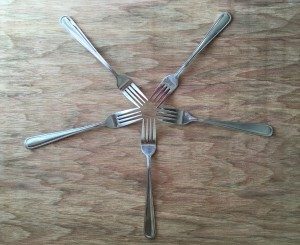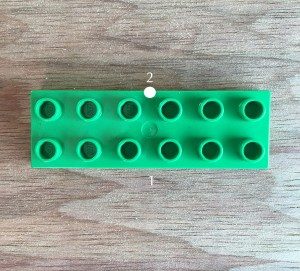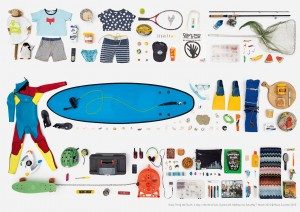Why take the Symmetry Challenge?
Symmetry is an aspect of the study of geometry. By studying symmetry and its properties you can see how maths is very much connected to the real world.
This challenge encourages you and your family to think about symmetry using everyday objects to make a unique design.
Connections to real life
Having an understanding of symmetry is important in many fields. For example, physicists working on the Large Hadron Collider project look at the underlying symmetries of tiny particles in their complex search to work out how our universe works, while choreographers may apply symmetry to design visually appealing performances.
1. Setting the Scene
This challenge is based on a famous project called ‘Every Thing We Touch’ by Paula Zuccotti, who captures a ’24 hour inventory’ of people’s lives in photographs. With your family, track everything you touch over an hour then use these items to create a final symmetrical design.
A day in the life of Arki by Paula Zuccotti © 2015
Maths words
geometry – geometry is the study of shapes and sizes, angles and lines. It is one of the oldest forms of mathematics. Symmetry is one part of geometry.
symmetry – an object has symmetry if it can be rotated, shifted, or reflected and still end up looking like the original shape. The two main types of Symmetry are Line and Rotational.
line symmetry – an object has line symmetry (also known as Mirror Symmetry) if a line (axis) can be drawn on the object to divide it into two halves in such a way that when the object is folded along that line the two halves correspond or match up.
rotational symmetry – an object has rotational symmetry when it can rotate around its centre and fit in to itself more than once. For example a rectangle has two orders of rotational symmetry because it looks exactly like the original after half a turn. If a shape only fits into itself once, it has no rotational symmetry.
polygon – a polygon is a two dimensional shape with at least three straight sides and angles. A polygon is regular when all angles and all sides are equal, otherwise it is an irregular polygon. Examples of polygons are hexagons, octagons and pentagrams.
Find more maths words in the Glossary.
2. The Challenge
Create a design using everyday objects.
1. Gather your design team. You may want to involve a parent, a grandparent, brother, sister or family friend.
2. Over a one hour period, keep track of everything you touch (excluding items you are currently wearing or have consumed!)
3. At the end of the hour, collect all these objects in a space for sorting and designing. If you’ve amassed more than 50 items as a team, you can return the objects you’re less keen on.
4. Arrange objects in three groups based on their attributes: the first collection having two or more of the same object, the second collection having 2 or more similar objects, and the third collection having many different objects. This classifying activity will help you to organise your objects depending on symmetry or the design attributes of shape, texture, colour or measurement.
5. Using the same objects in the first collection, place them next to one another in different directions – experimenting with the lines of symmetry and creating different symmetrical patterns.
6. For the similar objects in the second collection, create shapes like polygons and match each object’s design attributes where possible. For example, make a hexagon using 5 pens, with each nib facing in towards the centre, or make a rectangle with two mobiles placed top-to-top, faced-upwards.
7. Finally, using the different objects in the third collection, place them around the other shapes and patterns, based on their unique design attributes. For example, you may like to place them at equal distances from one another (measurement) or in a gradient rainbow from left to right (colour). Remember you’re going to photograph your final arrangement, so try to keep all objects within a standard photo shape i.e. rectangle or square.
8. Grab a camera to capture your fantastic design – unique to you and your family’s life.
Coach Chloe’s advice
Hi, I’m Coach Chloe. If you are stuck, I have some questions and suggestions that might help.
If you get stuck trying to find the lines of symmetry, grab a ruler or piece of string and carefully place along the centre of the object or centre of the connection between objects to check both sides match. Often it can literally be a visible line!
Sometimes it helps to visualise a design before physically putting it together. Grab some paper and pens/pencils to sketch out different ways you can place your objects. You could give each collection of objects a specific colour e.g. red for same, blue for similar and orange for different.
3. Keep Going
As a team, use the objects you classified as the same to increase the lines of symmetry in the overall design. Discuss how you might adjust or move these objects to achieve this, then have a go.
Looking at the objects you classified as different, consider how many orders of rotational symmetry they have. Remember that if a shape only fits into itself once, it has no rotational symmetry. This rectangular block has two orders of rotational symmetry: 
Looking for more? Check out these links:
Every Thing We Touch Read about the project that inspired the Symmetry Challenge.
Khan Academy – Transformations Explore the wider mathematical concept of geometric transformation, which includes reflection, rotation and translation.

